Panasonic HZ2000 (TX-55HZ2000) review: an astounding cinematic OLED TV
The Panasonic HZ2000 is maybe the best OLED TV for movie lovers thanks to its customised panel, and it packs in impressive Dolby Atmos sound, too

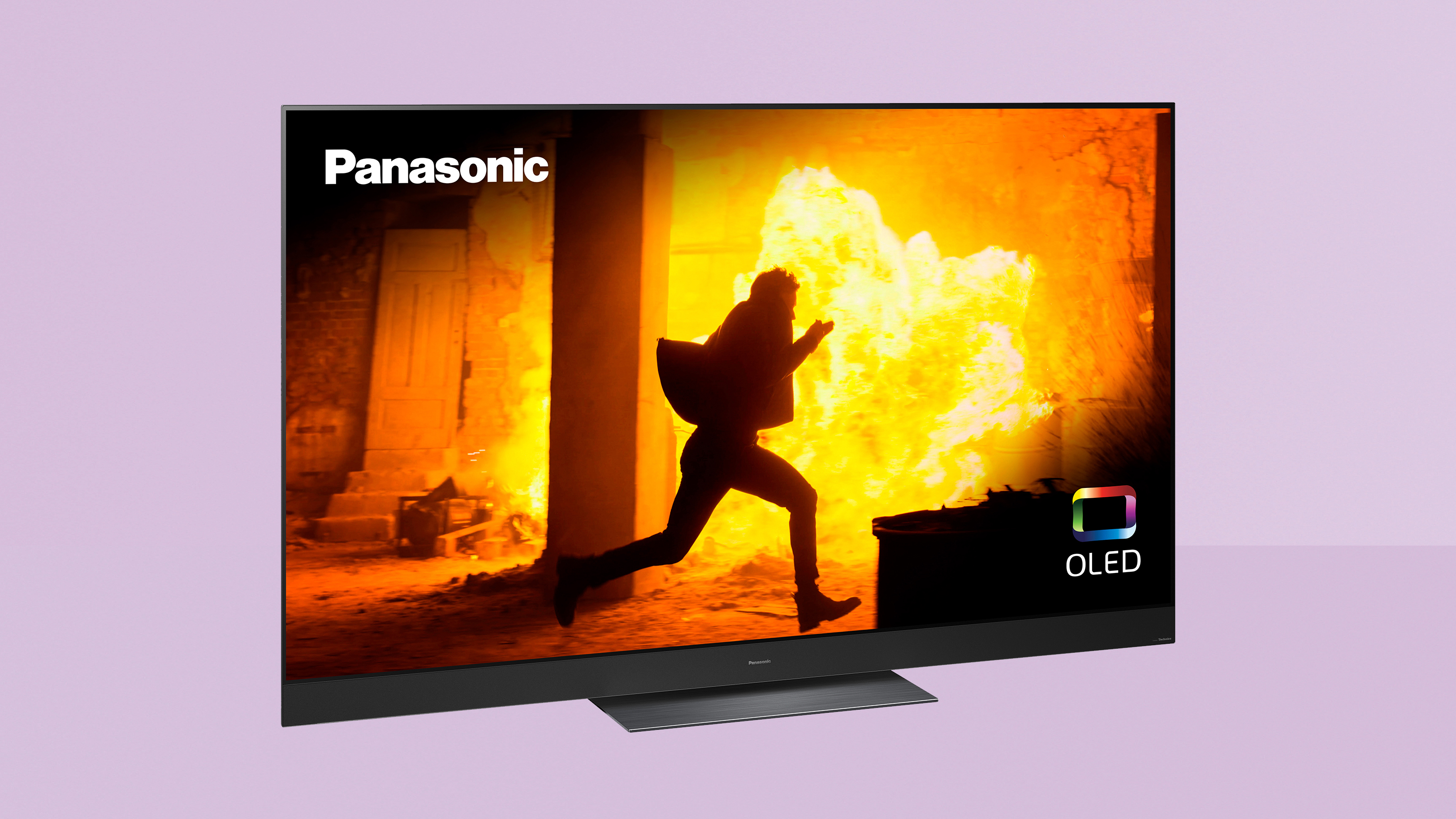
The Panasonic HZ2000 is arguably the best home cinema-centric OLED TV available. With a stunning OLED panel and effective Dolby Atmos sound system, it sets a high bar for sound and vision… but gamers will want to look elsewhere.
-
+
Sublime Master HDR Pro Edition OLED panel
-
+
Immersive on-board Dolby Atmos sound system
-
+
Universal HDR support
-
-
No 4K 120fps HDMI support for next-gen consoles
-
-
No Disney+ app
-
-
Dolby Atmos sound system lacks bass slam
Why you can trust T3
The Panasonic HZ2000 was the flagship of the company's 2020 TV lineup, and actually no one could match it last year. It's the 4K OLED TV that pushed above and beyond what you'll find in the other best OLED TVs, made to deliver a performance that replicates a mastering monitor in a Hollywood grading suite – not to spoil our review, but with the most cinematic images of any TV, this is just about the best TV for movie lovers.
But it’s not just quality video performance that distinguishes this TV. The HZ2000 also has a cinema-style Dolby Atmos sound system, complete with up-firing speakers for height channels in the soundtracks.
The set promises an all-in-one 4K home cinema experience – and that’s exactly what it delivers. The only thing missing is the popcorn… and a few gaming features.

Panasonic HZ2000 review: Price, release date & features
The Panasonic HZ2000 was released in August 2020, and its high level of AV finery comes at a price. The 55-inch HZ2000 (known as the TX-55HZ2000 officially) we're testing will set you back £2,999/€2,999. Sadly, this TV doesn't look likely to be available in the US, however it likely will be in Canada, so our American readers could consider a jaunt across a cross-border purchase – or you can skip to our list of the best alternative TVs here.
In a world where 50-inch 4K LED TVs can be had for as little as £300, that’s one hell of a premium. It's also a world where the superb LG CX OLED TV can be bought from just £1,499, and it certainly isn't half the TV despite being half the price. And the Philips OLED754 costs just a third of what the Panasonic will set you back. Generally, in this kind of price range, you're talking more about the best 8K TVs than 4K sets, so this is definitely aiming at the elite end.
There’s also a bigger 65-inch version, the Panasonic TX-65HZ2000, which sells for £4,299.
But then you shouldn’t expect home theatre royalty to come cheap.
The HZ2000 has universal HDR compatibility. As well as Dolby Vision, there’s HDR10+ (the open standard rival to Dolby Atmos adopted by Amazon for Prime Video), plus regular HDR10 and broadcast HLG. Universal HDR isn't that common even among other flagship sets – the Sony XH9505 only has Dolby Vision, for example, while the Samsung Q950TS only has HDR10+.
What’s more, this is Dolby Vision IQ, the latest variant that utilises a light sensor built into the TV to assess ambient lighting levels, so that it can automatically adjust the picture accordingly, so it always looks its best.
The set also supports Filmmaker Mode, the new standardised cinema preset that aims to make sure you see movies as close to what the directors intended as possible, but again, there’s some frosting on top, in the shape of Intelligent Sensing. Much like Dolby Vision IQ, Intelligent Sensing reacts to ambient light, optimising the Filmmaker Mode automatically to suit viewing conditions.
The TX-55HZ2000 offers four HDMI inputs, one with eARC support for external audio systems. All can handle 4K 60fps, but there’s no support for 4K at 120fps, the futuristic video output promised by PlayStation 5 and Xbox Series X consoles. Without this, this TV won't be making it onto our list of the best gaming TVs. There is ALLM (Auto Low Latency Mode) support, though.
Additional connections include analogue component AV, an optical digital audio output, Ethernet as well as onboard Wi-Fi, and three USBs.
Smart functionality comes via Panasonic’s My Home Screen platform.
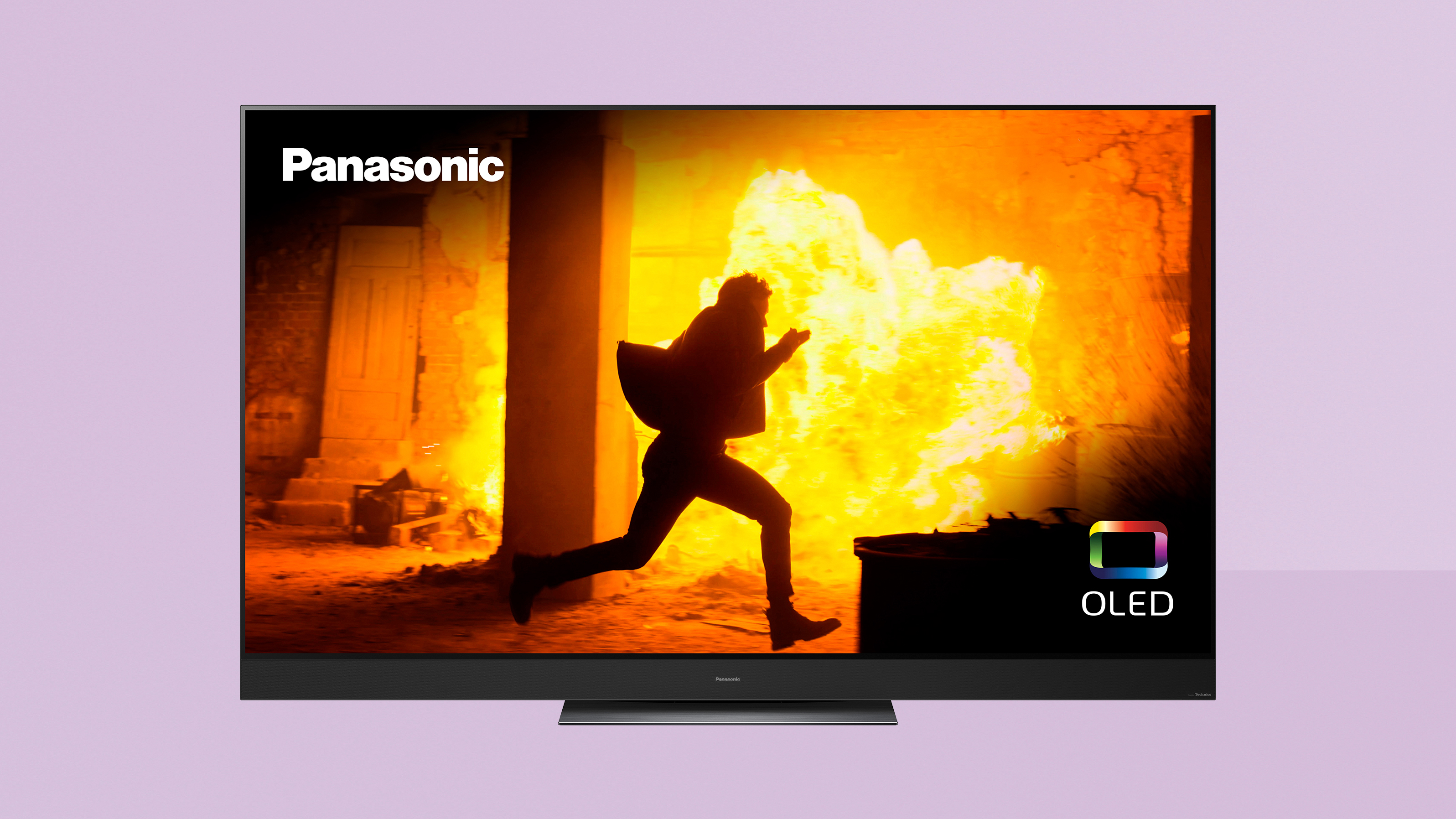
Panasonic HZ2000 review: Picture quality
When it comes to image quality, the TX-55HZ2000 is literally a shining star. The Professional Edition Master OLED panel has more pop than a bubble wrap factory.
First used on last year’s Panasonic GZ2000 model, it adopts heat management techniques devised for plasma screens to manage heat dissipation more aggressively than other OLED TVs. This has allowed engineers to push the overall picture level (not HDR peak brightness) up by as much as 30 per cent compared to other OLEDs. This translates to slightly brighter OLED imagery overall, with excellent colour vibrancy.
Bear in mind that all OLED TVs use the same panels (made by LG), so this brightness boost is basically a universal improvement over everything else on the market.
There’s actually no appreciable difference between the picture on this year’s HZ2000 compared to last year’s GZ2000. The key difference is the aforementioned ambient light control.
Making the most of this panel is Panasonic’s excellent HCX Pro image processor. An accomplished image engine, it does a superb job upscaling regular HD and maximising native 4K.
Streaming Netflix HD on this set is a revelation. Images are crisp, with subtle gradations in colour keeping things as realisic as we've seen. Regular Blu-rays appear similarly coherent.
Native 4K is also terrific. 4K SDR (as typically seen on Sky and other pay TV services) looks particularly fine, with that inherent image luminosity showcasing fine detail. Nature documentaries, which tend to feature bright scenes, look spectacular.
The set’s HDR performance is first rate. We measured HDR peak brightness at more than 900 nits, which is enough to allow specular highlights, atmospheric lighting and headlights to all glint and dazzle with believable intensity.
The panel also does a sensational job with near blacks and shadow detail. It’s in these little details that the HZ2000 edges ahead of close OLED rivals. There’s a convincing 3D-ness about scenes which draws you in.
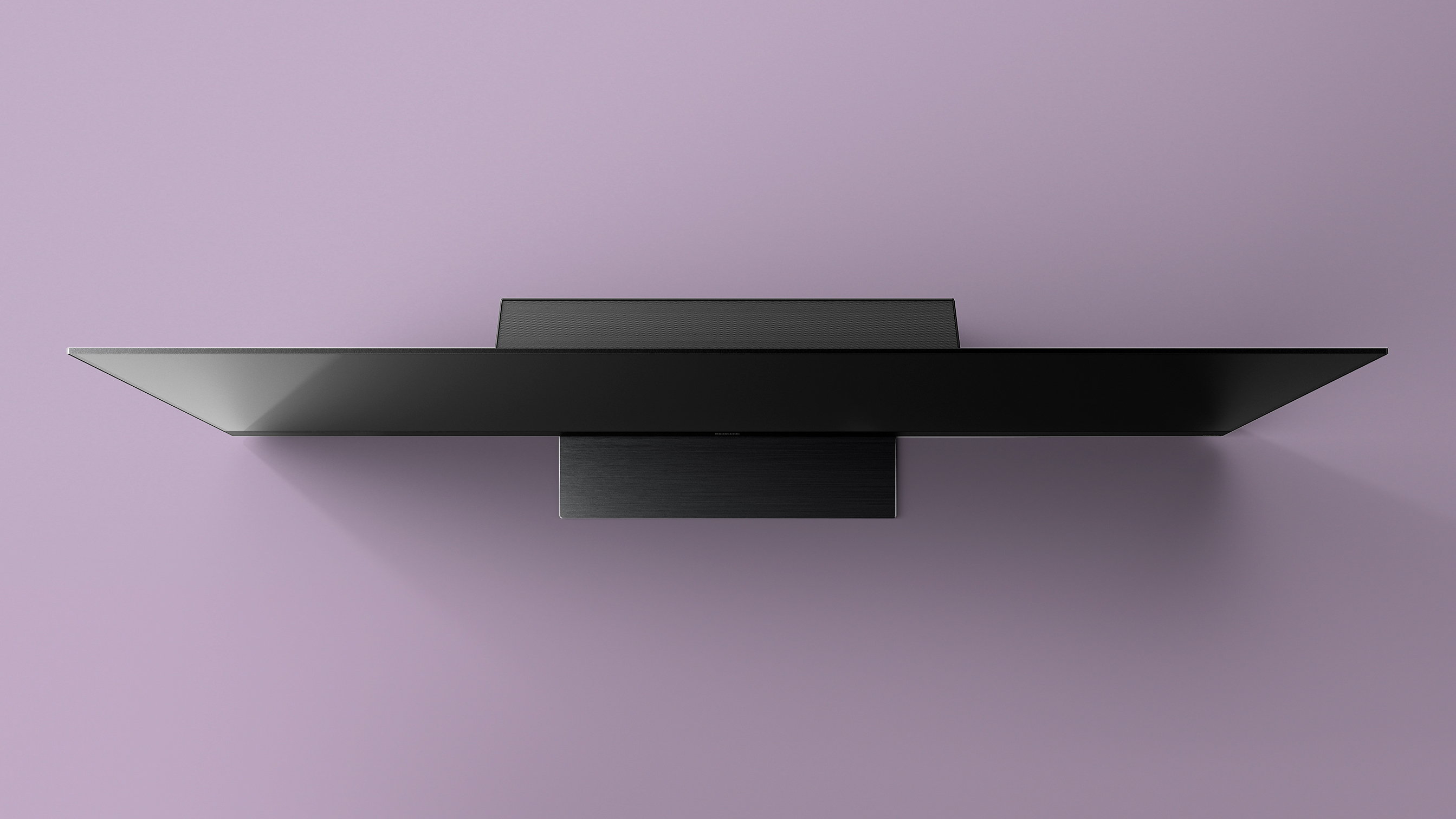
Panasonic offers a wide range of picture presets, and all have their virtues. Even Dynamic looks good, particularly with animation. Even when the HZ2000 over-saturates colours, its colours don’t look over-saturated – and that’s quite a trick.
Dolby Vision IQ and Filmmaker Mode with Intelligent Sensing both work well. Generally speaking, HDR can look overly dark when watched in a daylit room, and the HZ2000 manages to avoid that.
Filmmaker Mode disables image interpolation, picture sharpening and noise reduction. Doubtless heaven for purists, although Panasonic’s image processing is so good, it seems punitive to go without.
The Dolby Vision IQ mode is our recommended viewing option for all Dolby Vision content. Which rather leaves the set’s Netflix Calibrated mode out in the cold, since Netflix is a big source for Dolby Vision shows, but hey ho.
For everyday viewing, the Normal image preset is our standard recommendation – the balance is ideal.
Motion handling can be considered above average. IFC (Intelligent Frame Creation) is used to maintain clarity during fast motion action, just the thing if you want to keep your eye on the ball, while avoiding intrusive motion artefacts.
There’s also a Black Frame insertion option; this significantly reduces blur, but overly darkens the image.
As is emphasised by the set’s HDMI input limitations, this isn’t a screen that takes gaming particularly seriously. We measured input lag at 21.8ms (1080p/60fps) in Game mode, which while not bad, isn’t up there with premium screen offerings from LG or Samsung.

Panasonic HZ2000 review: Sound quality
There’s a growing number of TVs that offer Dolby Atmos pass-through, enabling you to enjoy immersive audio via an external sound system or one of the best soundbars. But very few attempt to deliver an Atmos audio experience out of the box, like the HZ2000 does.
That forward-facing speaker, which handles left/centre/right duties, is tuned by Technics and sounds great, while the Dolby Atmos height channel is clearly discernible via the dedicated up-firing driver mounted high on the back panel. Together they create a 140W soundstage that’s wide, high and directional.
The ensemble works particularly well with Dolby Atmos encoded live sports, creating an immersive atmosphere (even with fake crowd noise). It’s also a lot of fun with Atmos movies, although these more readily reveal its limitations.
What the sound system lacks is a sense of rear surround (unsurprisingly), and bass slam.
While the sound system acknowledges the sub channel in a movie mix, it grumbles rather than rumbles.
While it's very nice of Panasonic to give us as immersive a soundscape as it can from the unit itself, we're not sure how many people are spending this kind of money on a TV and not planning for a more capable sound setup to match as well. However, if that's you, the speakers here will be welcome.
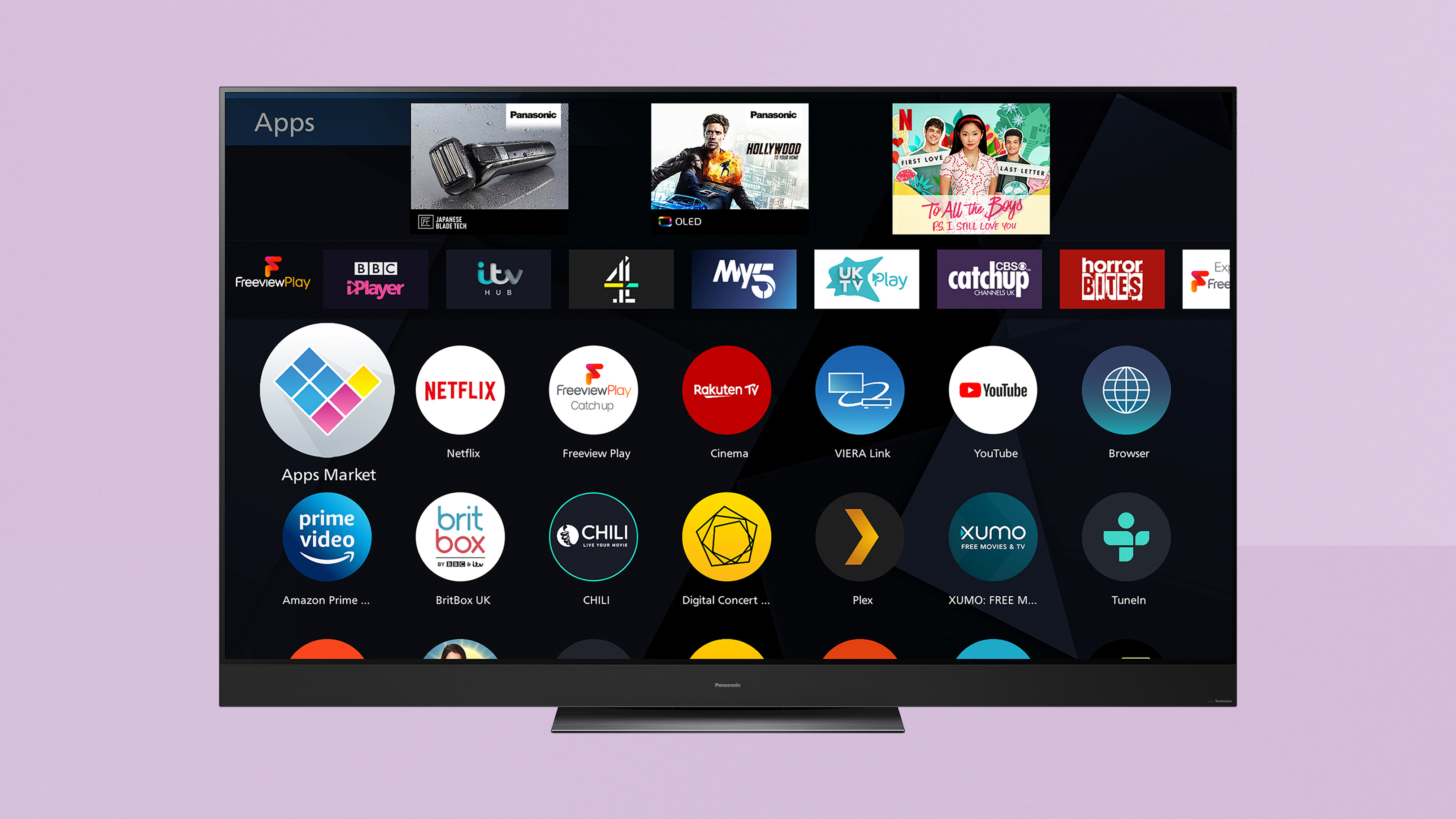
Panasonic HZ2000 review: Design and usability

The design is quietly classy. The minimal black micro-bezel blends effortlessly with the grille of the Technics speaker system, the panel sitting virtually flush on the central, squared pedestal. But there’s no swivel, which is available lower down the Panasonic OLED price chain.
The remote control has a nice metallic brushed finish, and is backlit for use when the lights go down.
Overall usability is fine, the HZ2000’s smart platform and navigation reassuringly sprightly. Now in its fifth iteration, the My Home Screen software offers a lean yet customisable look that’s easy to live with.
While Android on TVs still takes over the entire screen, and LG and Samsung's respective webOS and Tizen platforms operate from a function-heavy launch bar, Panasonic has taken a simpler approach.
My Home Screen’s shortcut buttons simply offer quick access to Live TV, apps or connected devices.
What’s cute is that you can add more, by ‘pinning’ them to the Home screen. If you want a badge for Amazon Prime Video, just pin it on; the same applies for a connected games console. Panasonic isn’t over thinking things, and that’s not a bad thing...
Catch-up TV choice is wide, courtesy of the set’s Freeview Play tuner – all the mainstream UK players are onboard (BBC iPlayer, All 4, ITVHub, My5, UKTVPlay ), while streaming services include Netflix, Amazon Prime Video, Rakuten.tv, YouTube, Britbox and Chili.
There’s no Disney+ though, which is no small miss in these days of needing to entertain the kinds more than ever. That said, you can add it inexpensively using one of the best 4K media streamers.
The TV also works with Google Assistant and Amazon Alexa ecosystems.
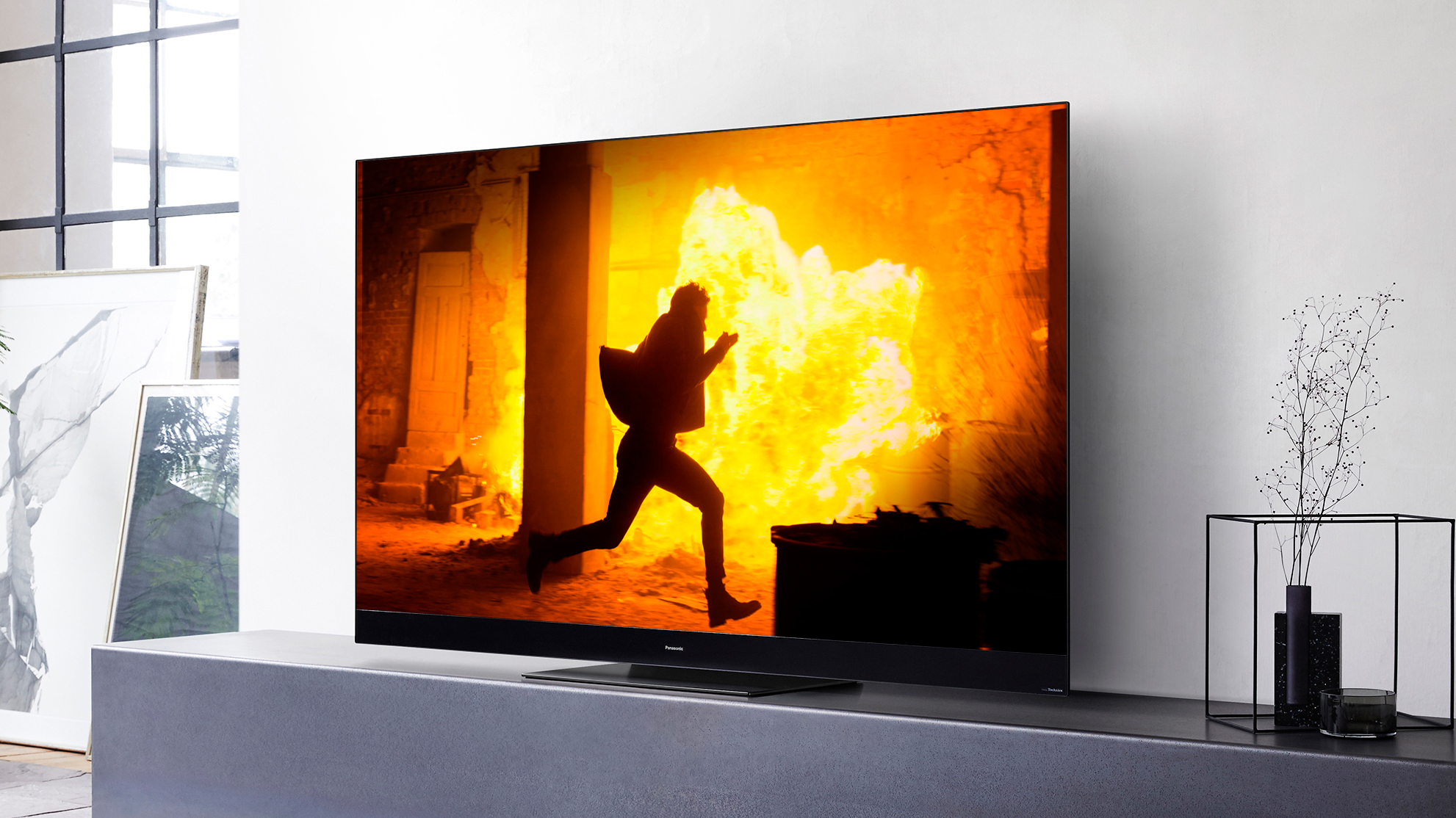
Panasonic HZ2000 review: Verdict
The Panasonic HZ2000 is a cinema-centric OLED TV with a picture performance that is second to none, particularly if you value filmic accuracy. Its onboard Dolby Atmos sound system is suitably immersive as a bonus, but the picture is a big draw here.
Even so, it’s not going to appeal to gamers. Both LG and Samsung offer models better served in that regard.
That said, if you’re shortlisting the best home cinema OLED screens in the world right now, the Panasonic TX-55HZ2000 is a truly key contender. Price may rule it out for some, but the finesse and quality on show here is just astounding.
Panasonic HZ2000 review: Also consider
When it comes to OLED quality without such a high price tag, the LG CX is the place to start. It's available in more sizes than the HZ2000 (48 inches, 55 inches, 65 inches or 77 inches), and features all the latest and greatest gaming tech – it's perfect for PS5. It's also a hell of a visual performer, though it isn't quite as rich and cinematic as the HZ2000. It's as good as it gets for its price, though – read our full LG CX review for all the details.
The Sony A8/A8H (depending on territory) is also an OLED to consider. Sony's processing is second-to-none for upscaling and handling motion, so for sports fans it's the best option out there. It also has a really impressive sound system, though not a Dolby Atmos one. Our Sony A8/A8H review explains all.
But if you're willing to spend big money on a TV and you want blockbuster image quality, the Samsung Q950TS has to be on your list of candidates. It's the flagship 8K TV in Samsung's range, and we rate it as the best TV on the planet. Its brightness is several times what this TV manages, making for truly stunning HDR, and fine backlight control means it's strong with dark areas too (though the HZ2000 is better of course, thanks to its OLED tech). Also, its 8K resolution screen and fantastic upscaling means that 4K images on it look better than regular 4K TVs – extra detailed and textured. Our full Samsung Q950TS review gets into exactly why it's so impressive.
- See the best TVs under £1000
- Or the best TVs under £500
Sign up to the T3 newsletter for smarter living straight to your inbox
Get all the latest news, reviews, deals and buying guides on gorgeous tech, home and active products from the T3 experts
For over 25 years, Steve has been casting his keen eyes and ears over the best that the world of TV and audio has to offer. He was the creator of Home Cinema Choice magazine, and contributes to huge range of technology, home and music titles along with T3, including TechRadar, Louder, Ideal Home, the i newspaper, and more.
-
 Warning: Ciele’s refreshed Elite Collection may cause excessive garment envy on race day
Warning: Ciele’s refreshed Elite Collection may cause excessive garment envy on race dayFlex on your run crew with Ciele’s latest drop
By Matt Kollat Published
-
 Smeg adds a touch of navy sophistication to its iconic breakfast set
Smeg adds a touch of navy sophistication to its iconic breakfast setIt's a minimalist's dream
By Lizzie Wilmot Published
-
 My most anticipated Netflix movie of the year gets a wild new trailer
My most anticipated Netflix movie of the year gets a wild new trailerHavoc looks pretty unbelievable
By Max Freeman-Mills Published
